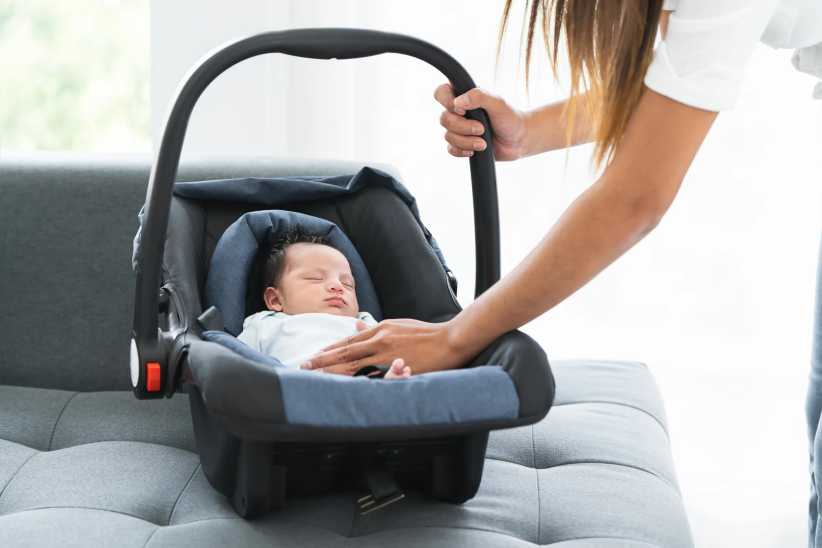 Recently, I was teaching a prenatal yoga class when the topic of epidurals came up. One woman said she had heard of the walking epidural and was quite excited about the idea of having pain relief without the consequence of losing her freedom of movement. I explained that a “walking” epidural did not mean she would likely still be walking the halls while receiving pain medication. The student was a bit disappointed to hear this, but she said she was happy to have the clarification before her birth.
Recently, I was teaching a prenatal yoga class when the topic of epidurals came up. One woman said she had heard of the walking epidural and was quite excited about the idea of having pain relief without the consequence of losing her freedom of movement. I explained that a “walking” epidural did not mean she would likely still be walking the halls while receiving pain medication. The student was a bit disappointed to hear this, but she said she was happy to have the clarification before her birth.
Let’s discuss the epidural options so moms are clear on their choices:
An epidural is a form of regional anesthesia which isolates pain relief to the lower body by blocking nerve roots. There are two types of epidurals used for childbirth: the standard epidural and the combined spinal epidural known as the “walking epidural.” The procedure for receiving both is essentially the same, with subtle differences in the placement of the catheter. With the standard epidural, the needle does not interact with the spinal fluid and stops just outside the “dura” space, whereas with the walking epidural, the needle actually comes into contact with the fluid surrounding the spinal cord.
During both procedures, the patient needs to keep very still, even during a contraction. She will assume a “cat” position (curving her spine into a “C” shape) and an anesthesiologist will clean her back with iodine and then place a plastic sheet over it. The doctor will then administer a local anesthetic, which is often described as “feeling like a bee sting.” They will proceed with placing the needle for either the standard or walking epidural and then thread a catheter in place, which remains taped to the patient’s back for the rest of her labor and delivery to continuously deliver pain medication.
Both epidural choices require close monitoring. This includes frequently taking the mother’s blood pressure, having continuous IV fluids to help combat any drop in blood pressure (a side effect of epidurals), and receiving full-time fetal monitoring. If she is prohibited from moving off the bed, she will also likely receive a bladder catheter.
More on the Standard Epidural
Besides the actual placement of the catheter, the two epidurals use different drugs. The standard epidural uses purely local types of anesthetics such as lidocaine (known as Xylocaine) and bupivacaine (known as Marcaine) or ropivacaine. The effect of the standard epidural is a very heavy, “dead” feeling to the lower extremities, making movement challenging for the laboring mother. The mother is still able to shift from side to side, but will usually need some assistance in moving her body.
More on the Walking Epidural
The walking epidural is a “cocktail” of narcotics, local anesthetic and epinephrine. Unlike with the standard epidural, the mother still retains some sensation in her lower body. This allows for more flexibility and ease when trying to shift from one position to another. The advantage of maintaining some mobility is that it can help facilitate the baby into a more favorable birthing position, which can lead to a quicker labor. With the walking epidural, the mother may even be stable enough to assume an all-fours position on the bed and do some hip movements to encourage optimal fetal position and take some pressure of her back. (With a standard epidural, the mother’s legs would be too numb to support her weight.) Also, since the mother is still retaining some awareness of her lower body, it will make the second stage of birth (pushing) easier to coordinate.
One disadvantage with the walking epidural is that it is slightly more technically involved than an epidural without a spinal component. In addition, there is a purposeful placement of a hole in the dura and this hole can be the cause of a headache after the spinal.
In addition, even though the combined spinal epidural touts the name “walking,” it is rather unlikely that the mother will be out of bed much. There are several reasons for this. First, some hospitals position the machine that administers the epidural medication so that it’s attached to the wall behind the bed (making it impossible to walk) whereas others have it attached to an IV pole (allowing moms to walk). So your particular hospital set-up determines your chance of mobility. Second, the hospital may simply prohibit walking once the epidural anesthesia begins. (I would recommend checking with your hospital to get information about its protocol.) In my personal experience as a labor support doula, I have never had a client get out of bed with a walking epidural; instead she simply has the freedom to move around on her bed.












